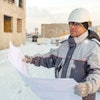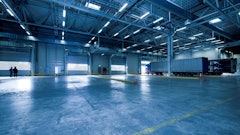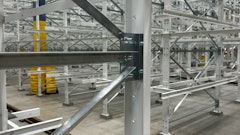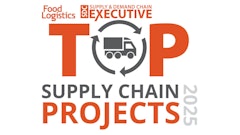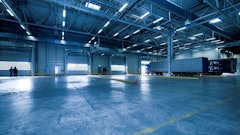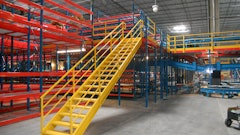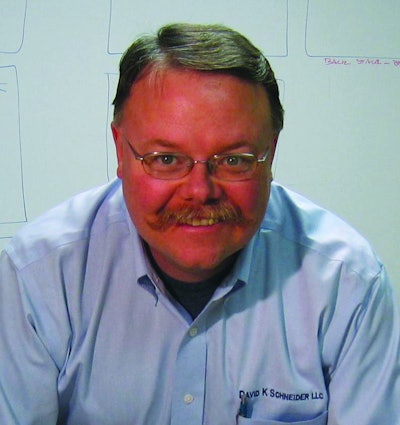
With so many variables to consider selecting a distribution location, choosing the right criteria for the search can be art and science. Yes, site selection involves math and science. But the decision is more than numbers. You must interpret information that is not numeric. You must go and observe the sites. Too many factors can make Logistics Network Optimization projects a vague decision. Leaving the decision to the machine is management malpractice.
Some logistics consultants and their network optimization systems can lead you to a city that “swims” with the promise of high tax abatement incentives, low land costs and even lower transportation costs. However, you could find yourself diving into an empty labor pool. Worse, the pool could be full of low skilled and low quality prospects, high competition and low supply, or trade union pressure, eating whatever savings exists.
Demographics and labor competition are key factors that many companies either fail to address or get wrong. Understanding where the labor pools are, what is in the pools and why they exist is key to success. Forecasting labor supply and demand is important. More important is developing creative ways to find out where the best labor pools are, and how to get them to come to you.
The issue comes down to key this criteria question: What really matters in the long-term operation of the operation, low cost or steady labor quality?
Most companies fixate on cost reductions—looking at the cost of land, construction, rent, and labor, to make the site selection decision. Costs are important factors to consider since costs are measureable in any analysis. However, beyond costs – many site selection teams overlook quality factors in the process, like the availability of qualified labor.
Scale Of Resolution
Transportation is by far the largest cost component in the selection models when looking at the macro solution. When the analysis becomes “micro” in scope transportation cost matters much less. I advise not to put too much faith in the accuracy of transportation models in small areas. “The model could suggest Willie Nelson’s Farm” if it struggles with limited street accuracy. Other factors come into play, operating costs. After transportation costs comes Labor and then all other costs.
Moving a facility a few miles to a location closer to highway access can have a positive impact on transport cost. One example is a facility built about six miles from the interstate highway, along a road not approved for STAA trucks. Once the DC operation started, the highway patrol began ticketing large over the road trucks for violating the road limitation. A parcel closer to the highway was another $2,000 per acre. That could have been a bargain—the fines exceeded $20,000 in the first year.
Invest In Shoe Leather And Tires
Most companies do consider labor costs in the selection process—they rely on consultant and real estate broker provided macro-economic and macro-demographic data to make a decision. This approach is fine for city to city comparison, but sometimes fails to consider changing trends, competition in the micro labor market, and public transportation patterns. There is a lack of consistent public access data to use in a remote process. Local Economic Development offices often collect and publish micro-market data, but the data can be suspect or out of date. Data provided by the major Industrial Real Estate brokers is not micro enough, as is Department of Commerce data.
So how do you measure micro-market labor costs? Well, that effort is more an art than a science. While all great artists are creative, there is a method that each develop to help them be creative. However, in all cases a concerted effort and investment of “shoe leather and tires” in the prospective micro-markets is usually the best protection from making a major mistake. The successful practitioners in the game go into the field. They look at how the site relates to the local community. They become part detective and investigate the options.
An Eye In The Sky
One successful logistics leader uses aerial surveys of potential sites. In the past that required hiring a helicopter and “buzzing” the sites, but now can be done from the desk using Google Maps. The idea is to “count the residential roof tops” in a specific area around the building. This leader likes to see “5,000 homes in a 10 mile box” of the potential site. His next step: get in a car and drive in the neighborhoods around the site. He looks the homes, the cars, and the people in the neighborhood. If the observed income level of the neighborhoods appears too low or too high he skips the site.
Too Few Or Too Many
Another variation of the “eye in the sky” is to count the number of big roofs in the area—as in warehouse roofs. If the location is the only distribution center in the area of offices and manufacturing, finding qualified help could be a challenge. The same goes with a lot of big building warehouses. The issue? Too much competition for labor. In the 1990s Henry County, GA, became a distribution center magnet—attracting betwen 1990 and 2002 over 50 large distribution centers in a concentrated area near McDonough. This area 35 miles south of downtown Atlanta has a wealth of new housing requiring higher salaries than most warehouse employees earn. As more warehouses opened the cost to attract and hire more labor increased.
Crystal Ball Approach
After the “eye in the sky” approach look to a desk project, research nearby open land space to learn more. Research the parcel zoning and its development plans. Empty space could be a new shopping mall, a new housing development, or a new industrial park. Go to city hall or the county government and research the planning commission meeting minutes. Look for signs of future housing and determine the cost of that housing. If the homes are upscale—consider a different location.
With open land zoned industrial expect future pressure on the labor market. Go have a candid conversation with the area Economic Development agency about the plan to attract labor to the area. If the Economic Development posture is “build it and they will come” you must look elsewhere. A good ED program talks about housing and public transportation plans.
Talk To Other Employers
Another avenue to get the pulse of the labor market is to speak to other employers. Talk to operators and learn about work ethic and knowledge. Speak to HR Managers and learn about the hiring pipeline effort they go through. Ask hard questions, like how many applicants fail Drug Testing, the hiring ratio (applications per single hire) and the tenure percentage (how many hires make it past the first year.
These are just a few of the many creative ways to gain a planning advantage for your new facility. A happy and stable work force creates more cash than unstable and unhappy. It only requires a commitment of effort and creativity.



